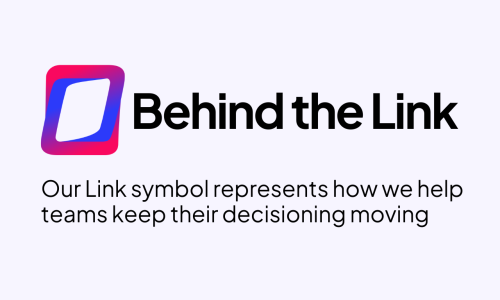Key Trends Shaping the Auto Lending Industry
The auto lending industry is continually evolving, driven by various factors that impact vehicle values, consumer debt, loan lifecycles, and lending practices. In this blog, we will explore the key trends shaping the auto lending landscape and provide insights on how lenders can navigate these changes effectively. Whether you’re a seasoned lender or just entering the market, understanding these trends is crucial for success.
Market Fluctuations – A Balancing Act
The auto lending landscape is greatly influenced by market forces such as supply and demand, economic conditions, and consumer preferences. These dynamics can lead to significant fluctuations in vehicle values, affecting the collateral’s worth. Lenders must keep an eye on these trends to make informed lending decisions and manage risk effectively.
Technology and Features – A Drive Toward Innovation
The rapid advancements in vehicle technology, including electric and autonomous capabilities, are transforming the auto industry. These innovations impact the depreciation rates of older models and influence consumer buying habits. Lenders must adapt their lending criteria to account for these technological shifts, ensuring they remain competitive in a changing market.
Environmental Regulations – Green Impact on Values
Stringent environmental regulations, such as emission standards and fuel efficiency requirements, reshape the automotive landscape. Compliance with these regulations can significantly affect the value of different vehicle types. Lenders must consider the environmental impact of vehicles in their lending criteria, as non-compliant models may see depreciated values.
The Pandemic Effect – Navigating Uncertainty
The COVID-19 pandemic brought unprecedented disruptions to the automotive industry. Manufacturing slowdowns, supply chain interruptions, and consumer behavior shifts all profoundly impacted vehicle values. Lenders faced the challenge of adapting to these uncertainties, emphasizing the need for flexibility and resilience in lending practices.
Consumer Debt and Car Payments – Balancing Act for Borrowers
Average Car Payments: Auto loans are a significant financial commitment for consumers. It is crucial to understand the statistics on average car payments and their trends over time. These numbers shed light on consumers’ financial burden when purchasing vehicles, helping lenders structure loans that align with borrowers’ financial capacities.
Auto Loan Debt Levels: Auto loan debt has surged in the US and Canada, becoming a substantial part of consumer debt portfolios. Lenders must comprehend the scale of auto loan debt and how it compares to other forms of borrowing. This knowledge is vital for assessing borrowers’ financial stability and making responsible lending decisions.
Debt-to-Income Ratios: Evaluating borrowers’ debt-to-income ratios is essential to determine their ability to manage car loan payments alongside other financial obligations. A high debt-to-income ratio may signal a higher risk of default, emphasizing the importance of thorough borrower assessment in lending.
Loan Delinquency Rates: Trends in loan delinquency rates offer insights into the financial health of borrowers and the level of risk lenders face. Keeping a close watch on delinquency rates helps lenders identify potential issues in their portfolios and adjust lending practices accordingly.
Loan Lifecycle Trends – Staying Ahead
Portfolio Valuations: Regularly assessing an auto loan portfolio’s value and risk profile is essential for informed decision-making. Lenders need to understand the health of their portfolios to optimize their lending strategies and manage risk effectively.
Real-time Market Information: Access to real-time market data empowers lenders to make agile adjustments to lending criteria, terms, and pricing. Staying attuned to current economic conditions and consumer behavior ensures competitiveness and responsiveness to market shifts.
Floorplan Financing: Floorplan financing plays a pivotal role in the auto lending industry, affecting dealerships’ inventory and, consequently, the lending landscape. Lenders must comprehend how this financing method impacts their relationships with dealers and inventory availability.
Digital Transformation: The digitization of lending processes is reshaping the industry, enhancing efficiency and risk assessment. Embracing digital transformation allows lenders to streamline operations and improve the customer experience.
Customer-Centric Approaches: Lending trends increasingly favor customer-centric approaches, tailoring loan solutions to individual needs. Providing personalized solutions enhances borrower satisfaction and loyalty.
Impact of Regulatory Changes: The auto lending industry is subject to regulatory changes that can significantly impact lending practices. Staying informed about these changes and adapting lending strategies to comply with new requirements is essential for risk mitigation.
Dive Deeper into Vehicle Values and Auto Industry Trends – Tune In Now!
In the Lending Link episode “Dive Deep into Vehicle Values and Auto Industry Trends,” we bring insights from Brian Clegg, Senior Lender Solutions Manager at Black Book. Brian’s expertise delves into the intricate world of vehicle values and the ever-evolving trends in the auto industry. By listening to this episode, lenders gain access to valuable knowledge to help them effectively navigate the challenges and seize the opportunities presented by the dynamic auto lending landscape.
Unlock Your Auto Lending Potential With GDS Link
Staying informed and adapting to these trends is crucial for lenders to succeed. GDS Link offers solutions and expertise to help lenders navigate these changes effectively. Schedule a call with us today to discover how our solutions can empower your lending operations and keep you ahead of the curve.
Recent articles

When Fraud Stops Looking Like Fraud
Read article
Behind the Link
Read article





